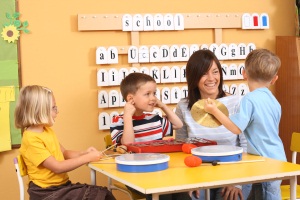How Can I Use the Peg Word Method to Remember?
Posted by PLB Blogger · Leave a Comment

 Different mnemonic strategies are used within the classroom to help our students enhance their skills in retention and recalling facts, concepts and definitions. The commonly used mnemonic strategies are the method of loci, using rhymes or phrases to remember information and acronyms. The Peg word method is also one such mnemonic strategy that aims to assist students in learning new information.
Different mnemonic strategies are used within the classroom to help our students enhance their skills in retention and recalling facts, concepts and definitions. The commonly used mnemonic strategies are the method of loci, using rhymes or phrases to remember information and acronyms. The Peg word method is also one such mnemonic strategy that aims to assist students in learning new information.
What is the Peg Word method?
Like all mnemonics, the peg word strategy utilizes the principle of learning and recalling new information by association with familiar facts. In this case the strategy makes use of association with numbers i.e. counting from one to ten to remember the new information. The strategy is most efficient for remembering a list of information in a particular order.
How does it work?
Both visualization and rhymes are the key ingredients that make learning and recalling facts easier using the peg word method. As most students are either visual or auditory learners, the peg word method is able to target and stimulate the key learning pattern of the students.
There are two main methods by which information is learnt using the peg word method. These are:
Number-rhyme peg method:
Each number from one to ten is associated with a rhyming word i.e. one is gun, two is shoe, three is tree etc. This number rhyme list is memorized and is used as a base to learn any number of new information. The new information is now superimposed on the number-rhyme list with the aid of a creative story incorporating the two.
Consider an example of learning a grocery list like bun, soap, toothpaste etc. The student has to imagine a story in which a bun walks into a supermarket holding a gun (one) and asks the soap who is near the counter tying the laces on his shoes (two) the location of the toothpaste that has a picture of a tree (three) on its cover.
Number-shape peg method:
This is also another visual association tool in which the pegs (used for hanging clothes) are viewed in the shape of the numbers i.e. one is a stick, two a swan, three as bent wire etc. The information is now associated with the shaped pegs to make learning easier.
In the previous example we have the bun clinging on to a stick-shaped peg, the soap stuck on one end of a swan shaped peg and the toothpaste being shaped into a bent wire.
The more visual the student’s associations the easier it is to remember the facts.
Similar to the number method is the Alphabet peg method, in which the alphabet replaces the number. Like the number rhyme method, the sound-alike method uses a list of words that rhymes with the letters and the concrete alphas includes a list of common words starting with each letter.
Peg Word method in the classroom:
Try out the two to familiarize students to use the peg word method in the classroom:
Pictorial representation: Put up pictures of the number rhymes and the alphabet peg either in the form of a picture chart or pictures in different areas of the classroom. These visual cues help the students to remember both the rhyme list and also recall new information by focusing on the pictures. When these pictures are placed in different areas, students are able to make use of the loci method along with the peg method i.e. gun near the window, shoes near the door etc.
Hang some pegs: Create a row of pegs for your classroom (cardboard ones) in the shape of the numbers and keep some index cards with a loop attached to them nearby. When new facts are being introduced to the class, write the list on the index card and hang them on the respective pegs for all the students to see and learn. Once learned, ask the students to collectively list down the facts, placing the cards on their pegs as students name them.
Discuss here: What are some strategies that you use in the classroom to help students remember facts?
Learn more: Take a course



